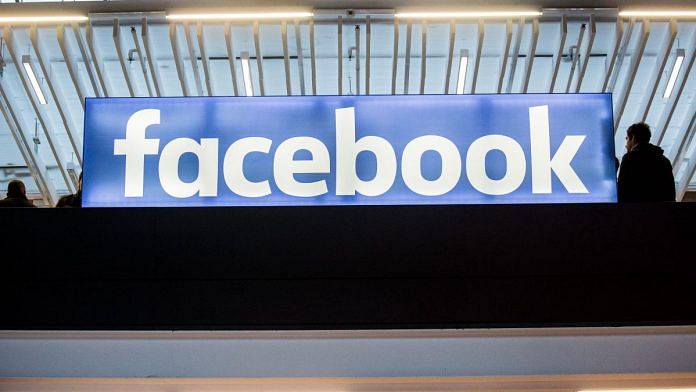New Delhi: Facebook, which has been under fire for reportedly turning a blind eye to hate speech by BJP leaders to protect its business interests in India, is not among the companies empanelled to publish government ads under the Modi government’s new social media publicity policy, ThePrint has learnt.
To be sure, though, the policy was formulated in May and the empanelment process was in place well before the controversy over how Facebook handled hate speech in India was triggered after a report in The Wall Street Journal earlier this month.
While Facebook did not make the cut, tech giants Google and Twitter are empanelled under the policy. The policy was finalised by the Union Information & Broadcasting (I&B) Ministry to create a framework for issuing government ads on social media.
The policy lays down guidelines that would make a company eligible for ads, and requires contenders to file applications with the government. I&B ministry sources said that Facebook may not have been aware of the empanelment process and hence missed it.
ThePrint reached Facebook by mail for comment, but is yet to receive a response.
An I&B ministry spokesperson confirmed that Google and Twitter have been empanelled under the policy. However, the spokesperson didn’t elaborate on why Facebook wasn’t empanelled while Google and Twitter were.
“Since the announcement of policy guidelines, two such platforms viz Twitter and Google have entered into agreement with BOC for government advertisements,” the spokesperson said, referring to the Bureau of Outreach and Communication (BOC), a media unit under the I&B Ministry
Before the new policy, no social media platform was eligible to directly get advertisements from the central government. But private firms engaged by the government for campaigns could tap social media platforms to expand their reach. Also, some non-social media websites were made eligible for government advertisements in 2010.
I&B ministry sources said even Twitter and Google are yet to get any ads under the new policy amid an overall fall in government ad campaigns. A ministry spokesperson confirmed that the two companies haven’t been issued any ads so far.
Also Read: Campaign to boycott Facebook ads plans to go global, says Reuters report
What does the policy say?
The social media policy is based on guidelines devised by the BOC in March.
The policy lays down certain conditions companies have to fulfil to qualify for government ads, including being in continuous operation under the same domain name or access address for at least six months, and a minimum of 25 million unique users in India per month (verifiable by an authentic agency).
The duration, budget, audience, theme, and content for the campaign will be decided by the BOC, and platforms based in India will get preference. The campaigns will also be monitored by the ministry.
The companies should not have been suspended or blacklisted by any ministry, government body or state government, and must keep the government informed about any change in ownership and domain address, bank account details, etc.
Among other things, it states that a real-time dashboard should show the quantified outcome of the campaign. Performance of the campaign will be judged on the basis of number of impressions, clicks, views, followers added, and engagements.
Asked for the justification for such a policy, officials said the government wants to leverage the vast reach of social media to sharpen its messaging according to the section of audience targeted. The relative cost efficiency of social media campaigns was also a factor, according to the policy guidelines.
“With the increasing number of people (especially youth) spending time on social media platforms, these platforms may provide avenues for communication and outreach,” the policy guidelines state.
According to the policy, there is a “definite need for… guidelines for engagement of social media platforms” so that assured reach may be attained.
‘Limited ads issued’
I&B ministry sources told ThePrint that the companies empanelled under the policy are yet to get any ads.
“Even the empanelled ones haven’t got any advertisements because the government has given out very few advertisements in the last several months across all mediums,” one official said.
The government, according to the official, “largely feels that more innovative and direct messaging for the audience is more effective than giving out advertisements”.
“After the coronavirus pandemic struck and the PM declared a lockdown, there have been limited advertisements given out during this period across the media,” the official said.
“For example, the PM covering his face with a gamcha is also a kind of direct messaging to spread the word on the importance of wearing masks,” a second official said.
Also Read: Facebook’s Ankhi Das says facing death threats, files police complaint after WSJ report row



